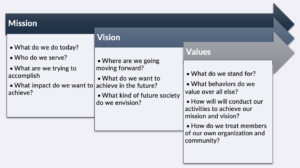Financial Plan
A financial plan is an overview of your current business financials and projections for growth. Think of any documents that represent your current monetary situation as a snapshot of the health of your business and the projections being your future expectations.
Components of a financial plan:
- Profit and loss statement
- Cash flow statement
- Balance sheet
- Sales forecast
- Personnel plan
- Business ratio and break-even analysis
A financial plan is a snapshot of the current state of your business. The projections, inform your short and long-term financial goals and gives you a starting point for developing a strategy.
It helps you, as a business owner, set realistic expectations regarding the success of your business. You’re less likely to be surprised by your current financial state and more prepared to manage a crisis or incredible growth, simply because you know your financials inside and out.
And aside from helping you better manage your business, a thorough financial plan also makes you more attractive to investors. It makes you less of a risk and shows that you have a firm plan and track record in place to grow your business. (Betenson, T., n.d.)
Financial Strategy
A good financial strategy combines financial planning and strategic planning, promoting achievement of goals through careful, planned investment.
(Baton/Global, 2021)
Investment
An investment is an asset or item acquired with the goal of generating income or appreciation. Appreciation refers to an increase in the value of an asset over time. When an individual purchases a good as an investment, the intent is not to consume the good but rather to use it in the future to create wealth.
An investment always concerns the outlay of some capital today—time, effort, money, or an asset—in hopes of a greater payoff in the future than what was originally put in.
An investment involves putting capital to use today in order to increase its value over time.
An investment requires putting capital to work, in the form of time, money, effort, etc., in hopes of a greater payoff in the future than what was originally put in.
An investment can refer to any medium or mechanism used for generating future income, including bonds, stocks, real estate property, or a business, among other examples.
Understanding that investment can take many shapes enables businesses to take advantage of a variety of resources. Considering all available investment resources when developing a financial plan promotes optimal use of financial resources. (Hayes, H., 2022)
What resources can be invested?
- Time
- Physical assets
- Money
Baton/Global, February, 19. 2021, “How to Write Mission, Vision, and Value Statements – 100 Examples to Help Guide You Through the Process”, https://www.batonglobal.com/post/how-to-write-mission-vision-and-values-statements-with-examples#:~:text=The%20mission%20statement%20communicates%20the,organization’s%20core%20principles%20and%20ethics.%E2%80%8B
Betenson, T., n.d., “How to write a financial plan for your small business – Guide 2022”, Bplans, https://articles.bplans.com/the-key-elements-of-the-financial-plan/
Hayes, A., September, 30. 2022, “Investment Basics Explained With types to invest in”, Investopedia, https://www.investopedia.com/terms/i/investment.asp
